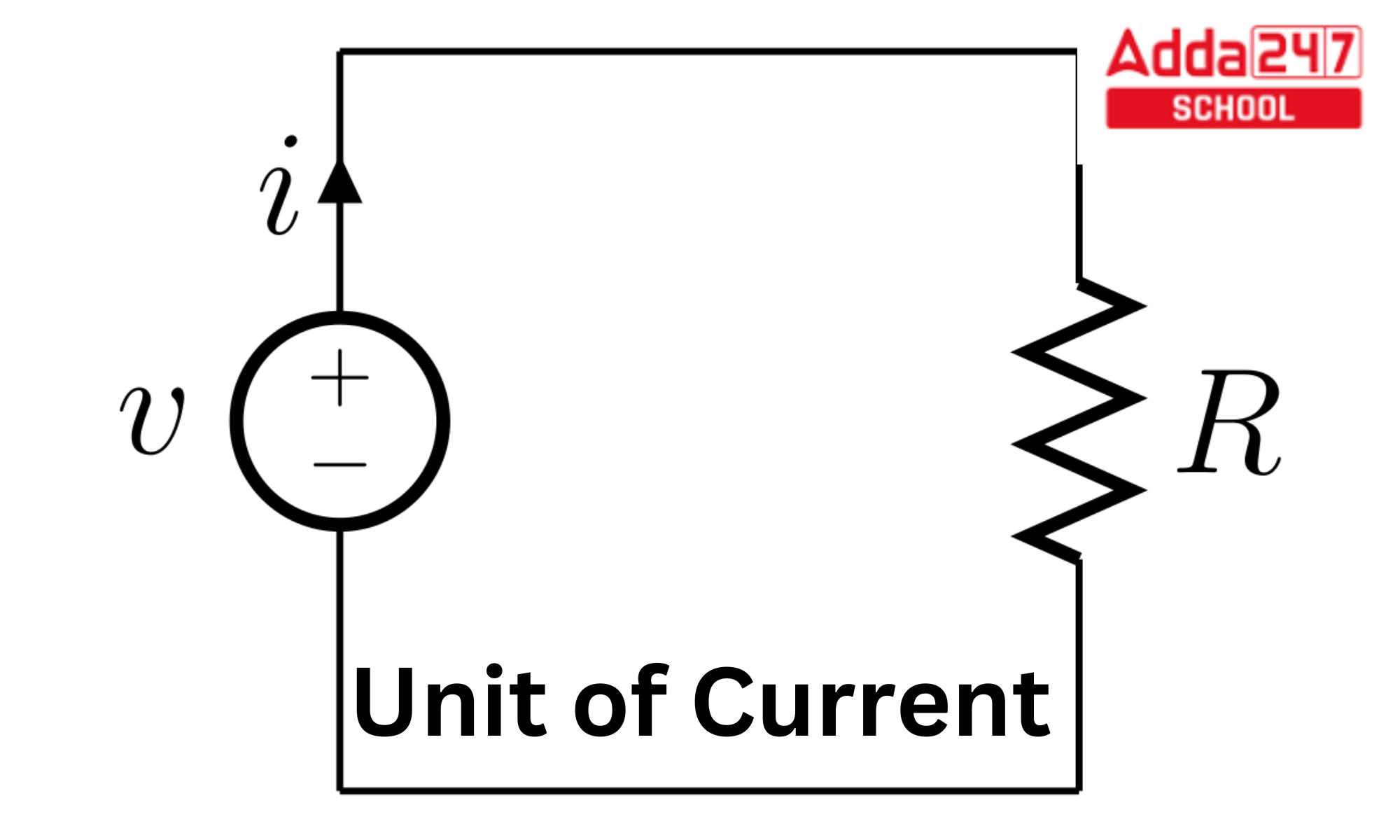Electric Current: A stream of charged particles, such as electrons or ions, travelling through an electrical conductor or a vacuum is known as an electric current. The net rate of electric charge flowing through a surface or into a control volume is how it is calculated.
Unit of Current
Unit of Current: Electric current is measured in a SI unit known as an ampere, hence Unit of Current is Ampere or A. It is determined by assuming that the elementary charge, e, has a fixed numerical value of 1.602 176 634 x 10-19 when expressed in unit C, which is equivalent to the second in terms of ΔvCs.
What is the Unit of Current
The unit of electric current is the ampere, symbolized as “A”. Electric current is a measure of the flow of electric charge through a conductor. One ampere is defined as the flow of one coulomb of electric charge per second. In other words, if a current of 1 ampere flows through a wire, it means that 1 coulomb of electric charge passes through that wire every second.
Electric Current
Magnetic fields are produced by electric currents and are applied in motors, generators, inductors, and transformers. They result in Joule heating in conventional conductors, which lights up incandescent light bulbs. Electromagnetic waves produced by time-varying currents are utilised in communications to transmit information.
Voltage
The difference in electric potential between two places is known as voltage, often referred to as electric pressure, electric tension, or (electric) potential difference. It translates into the amount of work required to transfer a test charge between two places in a static electric field. Volt is the name of the voltage-derived unit in the International System of Units.
SI Unit of Voltage
The SI (International System of Units) unit of voltage is the volt, symbolized as “V.”
Electric Resistance
A measurement of an object’s resistance to the flow of electrical current is called its electrical resistance. Electrical conductance, which measures how easily an electric current moves, is its reciprocal quantity. Mechanical friction and electrical resistance have some conceptual similarities.
SI Unit of Resistance
The SI unit of resistance is the “ohm,” represented by the symbol “Ω”. It is named after the German physicist Georg Simon Ohm, who made significant contributions to the understanding of electrical circuits and resistance. The ohm is used to measure the opposition that a material or component presents to the flow of electric current.
Semiconductors-Types, Examples, Material, Properties, Uses
Unit of Electric Current Density
Current Denity
The quantity of charge that moves across a unit area of a selected cross section in a unit of time is referred to as the current density in electromagnetism. A vector whose magnitude is the electric current per cross-sectional area at a certain location in space and whose direction is determined by the mobility of the positive charges there is known as the current density vector.
Unit of Current Density
Electric current density is expressed in amperes per square metre in SI base units, hence it is the Unit of Current Density.
Unit of Current Gain
Current Gain
Gain in electronics refers to a two-port circuit’s capacity to boost a signal’s power or amplitude from the input to the output port by incorporating energy from a power source. It is often described as the mean difference between the output port’s signal amplitude or power and the input port’s amplitude or power.
Unit of Current Gain
When expressing it, the logarithmic decibel (dB) units are frequently used (“dB gain”), hence it is the Unit of Current Gain. An active component or circuit will have a gain more than one (greater than zero dB), which is amplification, whereas a passive circuit will have a gain less than one.
Unit of Current Sensitivity
Current Sensitivity
Current sensitivity is the amount of deflection a galvanometer coil experiences in response to a given amount of electric current flowing through it. Low currents can be found and measured using a galvanometer. It is frequently used in variable resistor and bridge circuits to exhibit minute deflections. It is an accurate current measurement tool. It is capable of detecting very small currents, up to a few microamperes.
Unit of Current Sensitivity
Radian per ampere is the SI unit of current sensitivity.
Also Read:
- All About Father Of Genetics- Gregor Mendel
- 7 Rainbow Colours Name In Order, Drawing, Vibgyor Meaning
- What Is The Value Of Root 3?
- Which Is The Ugliest Language In India?
- How Much Is 1 Million And 1 Billion Dollars In Indian Rupees?
- What Is The Square Root Of 4?
- Smallest Country In The World By Area & Population, Map
- Compound Interest Formula, Definition, Calculator, Questions And Examples
- Unsung Heroes Of Freedom Struggle 1857 To 1947









 HPBOSE Compartment Date Sheet 2025 Out, ...
HPBOSE Compartment Date Sheet 2025 Out, ...
 RUHS Counselling 2025 Round 1 Seat Allot...
RUHS Counselling 2025 Round 1 Seat Allot...
 Bihar Board Dummy Registration Card 2026...
Bihar Board Dummy Registration Card 2026...










